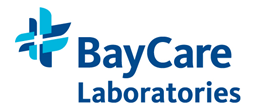
INTERPRETATION for Negative results
No mutations were detected. BRAF mutations occur in 1-2% of non-small cell lung cancers (NSCLCs). The combination of dabrafenib and trametinib may be used to target BRAF V600E mutation containing tumors. EGFR mutations occur in 10-15% of NSCLCs, and tumors with an EGFR mutation may be treated with a targeted tyrosine kinase inhibitor. ERBB2 mutations, predominantly within exon 20, occur in 1-2% of NSCLCs and may respond to ERBB2 targeted therapy. KRAS mutations occur in 20-30% of NSCLCs, typically are exclusive of other oncogenic driver mutations and generally predict lack of response to tyrosine kinase inhibitor therapy.
| Collection |
| Ordering |
| Result Interpretation |
INTERPRETATION for Negative results
No mutations were detected. BRAF mutations occur in 1-2% of non-small cell lung cancers (NSCLCs). The combination of dabrafenib and trametinib may be used to target BRAF V600E mutation containing tumors. EGFR mutations occur in 10-15% of NSCLCs, and tumors with an EGFR mutation may be treated with a targeted tyrosine kinase inhibitor. ERBB2 mutations, predominantly within exon 20, occur in 1-2% of NSCLCs and may respond to ERBB2 targeted therapy. KRAS mutations occur in 20-30% of NSCLCs, typically are exclusive of other oncogenic driver mutations and generally predict lack of response to tyrosine kinase inhibitor therapy.
| Administrative |